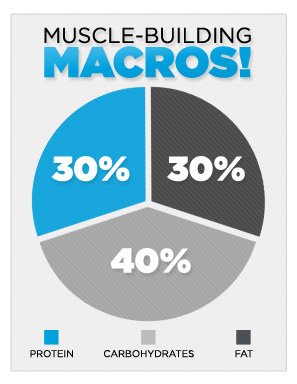


Now that you have your calories figured out, your calories will come from your macronutrient intake.

My Fitness Pal lets you choose weight loss goals and sets you up with a calorie goal accordingly. Safe weight loss occurs at about one pound a week on average but can be upwards of two pounds a week depending on how much weight you need to lose. Once you have your TDEE, you have to decide how many calories you need to lose weight. My Fitness Pal is the easiest way to start. There are even apps, like My Fitness Pal, that I have clients use to track their food that have built-in calculators to help you figure out your calorie needs based on your goals. There are a few equations that you can manually do (Mifflin St Jeor, Harris-Benedict) but we also have cool, fancy online calculators that help you do the same thing. You need to know this number so that you can make sure you are eating below it.
#Recommended macro percentages for weight loss plus#
This number is a combination of your Basal Metabolic Rate (BMR) plus your activity level. Your Total Daily Energy Expenditure (TDEE) is the number of calories you require to maintain your current weight. Start from Scratchįiguring out your baseline calorie amount is the first step. The primary determinant of weight change is total caloric consumption–and being diabetic does not change that. People tend to overcomplicate weight loss by saying you have to eat fewer carbs or take less insulin or do cardio or to lose weight but these are all tactics that result in or from lowering calories. This means that if you want to lose weight, you need to know how many calories you consume daily to maintain your current weight and then eat below this amount. Weight loss occurs when you burn more calories than you consume.

But how exactly does weight loss even happen? We all want to lose weight at some point or another for whatever reason. Let’s start from the beginning to fully understand weight loss and what it takes to have a successful plan. It can be incredibly hard to lose weight in today’s overwhelming he-said-she-said sea of information often leaving people with more questions than answers. Instead, you need a balance of macronutrients to get scientific weight loss results.Believe it or not, weight loss is science not magic. However, a keto diet that focuses only on a large amount of macronutrients (like fat) and steers clear of another (like carbs) isn't for everyone. In contrast, healthy people may feel less hungry and more easily stick to a high-fat, low-carb diet. For example, people with type 2 diabetes can easily control their blood sugar with a low-carb diet. To increase your chances of success on a low-calorie diet, be flexible with your macronutrient ratio based on your preferences and health. This is exactly why so many dieters fail. However, sticking to a long-term weight loss diet will be difficult for most people. Adhering to a reduced calorie diet is a very important factor for weight loss. Although the proportion of macronutrients in the diet does not directly affect fat loss, it may be related to the ability to adhere to a low-calorie diet.


 0 kommentar(er)
0 kommentar(er)
